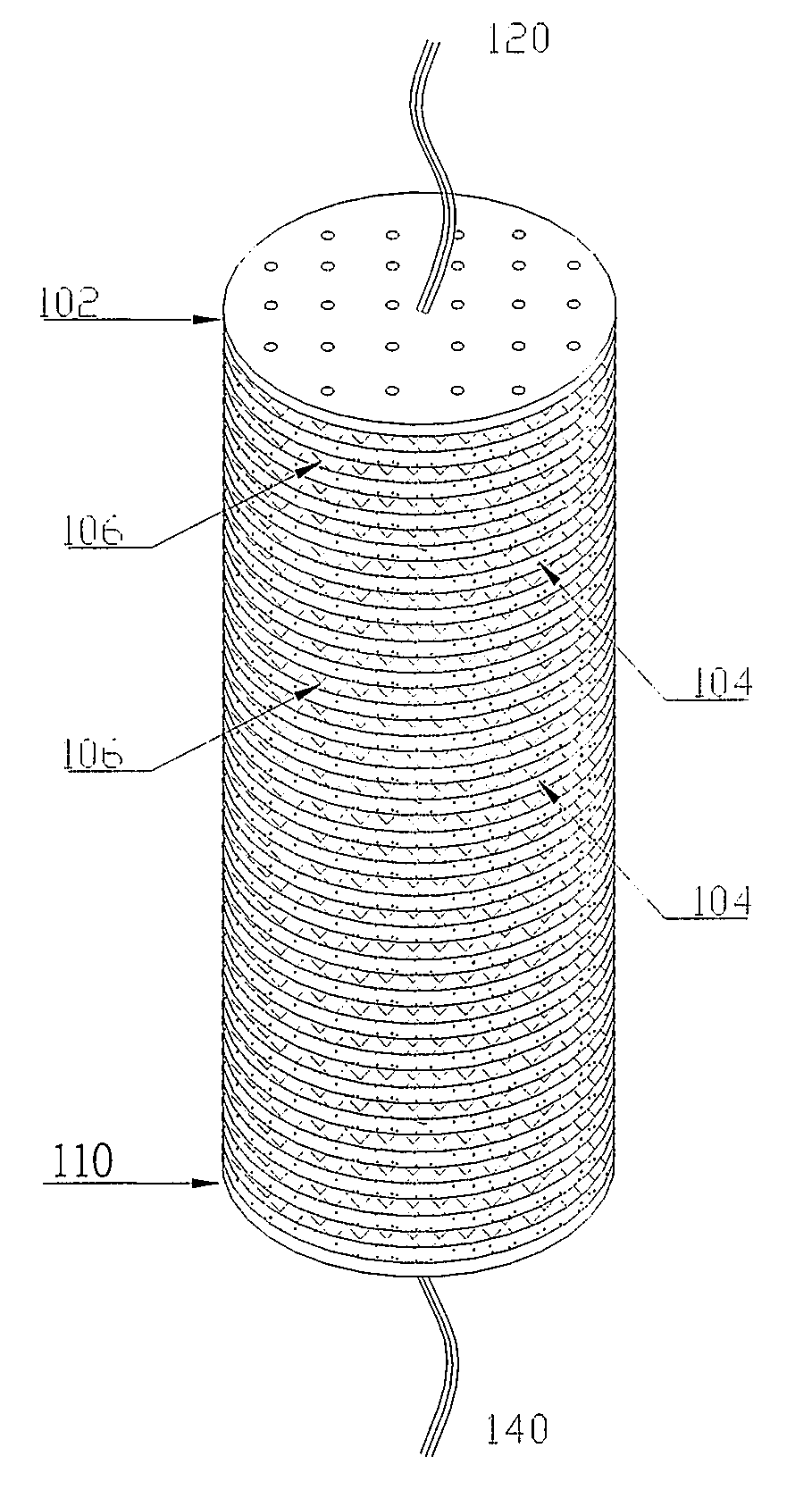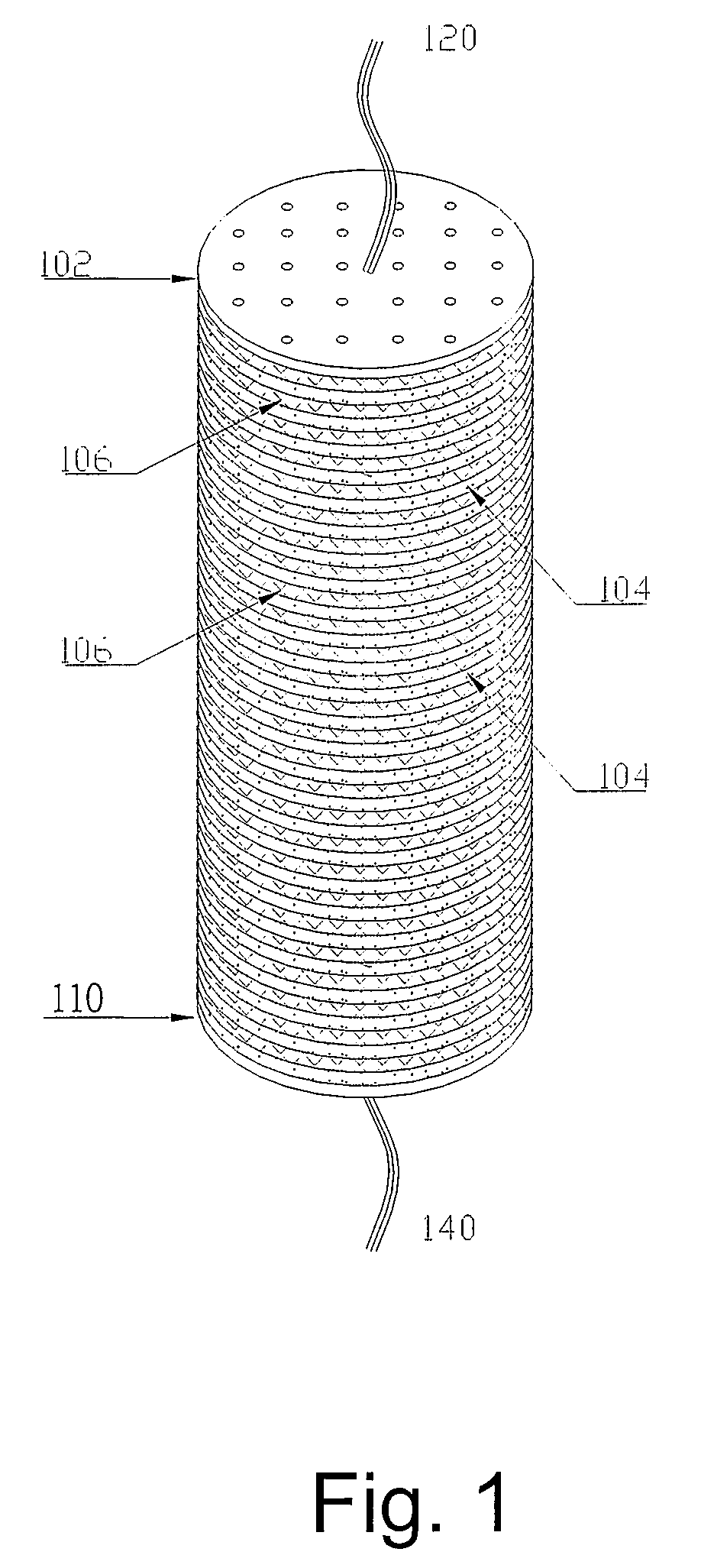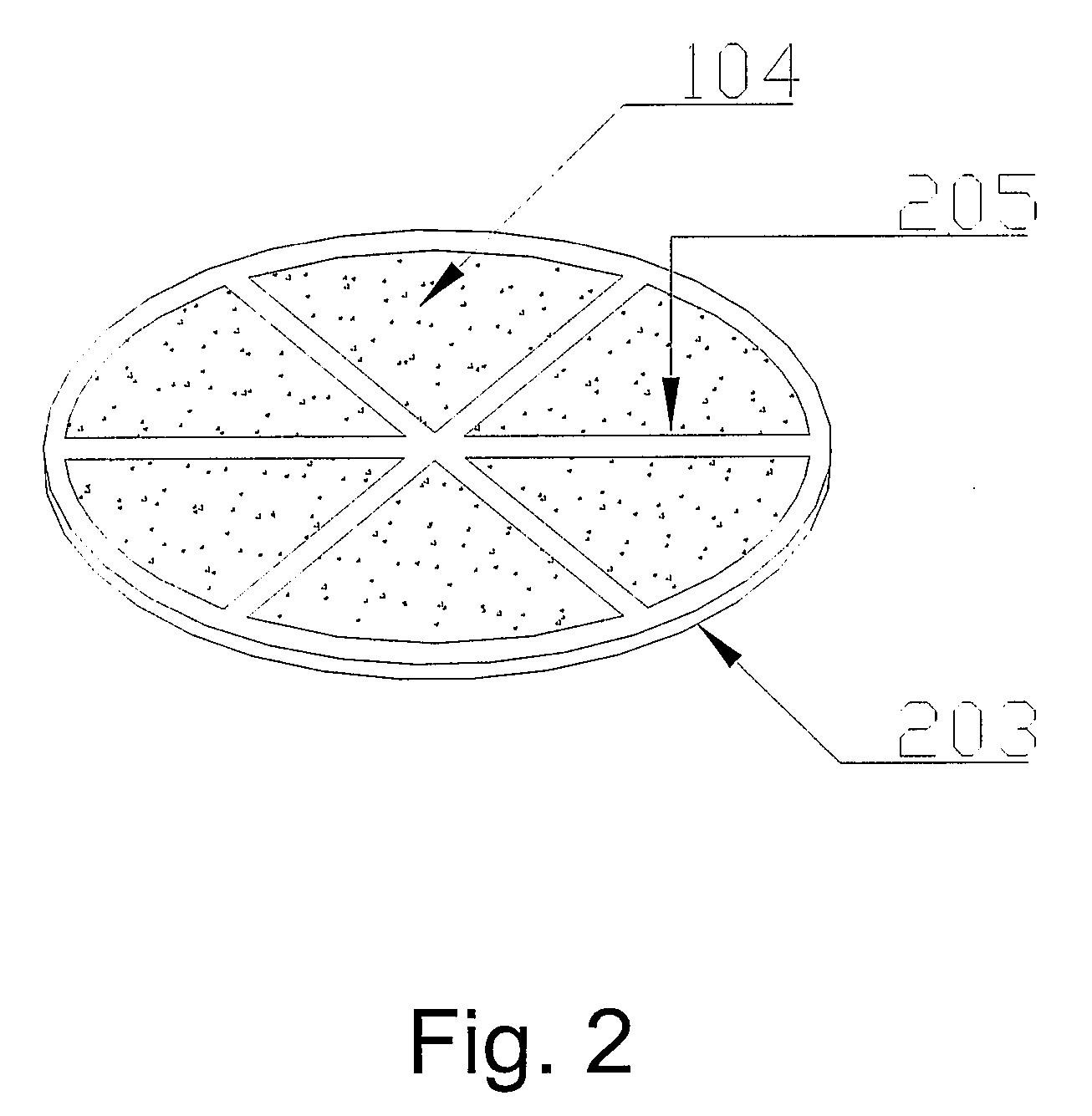Capacitive deionization system for water treatment
a deionization system and water treatment technology, applied in the field of water purification, can solve the problems of increasing costs, secondary pollution, and the opportunity of reducing electric energy and recovering useful ions
- Summary
- Abstract
- Description
- Claims
- Application Information
AI Technical Summary
Benefits of technology
Problems solved by technology
Method used
Image
Examples
example 1
[0033]A FTC module 100 comprising 2 end electrodes 102 and 110 and 20 FTC electrodes 104 stacked between the two end electrodes as shown in FIG. 2 was used. Each FTC electrode 104 has a circular shape having a diameter of about 54 mm. Tap water was passed through the FTC module for removing the ions such as Mg2+ and Ca2+, from the water. Both of the end electrodes 102 and 110 were comprised of stainless steel disks coated with activated carbon and have the same diameter as that of the FTC electrodes 104. The end electrodes 102 and 110 were welded to a metal rod having 2 mm diameter, for compressing the FTC electrodes 104 between the two end electrodes 102 and 110 and for serving as the terminal for connecting to a power supply. The FTC electrodes 104 may be comprised of commercial carbon cloths made of activated carbon and fabrics having a bulk conductivity of 0.001 S / cm. The sealing members and the FTC electrodes 104 were stacked alternately such that a gap of about 1 mm was mainta...
example 2
[0038]A system comprising five FTC modules 100 was used for treating water, wherein each FTC module 100 comprises the configuration of the FTC module 100 used in EXAMPLE 1. The FTC modules 100 are connected in series and are used for desalination of seawater. Though the five modules are connected in series for water flow, they are charged in parallel by applying a voltage, of about 35 V DC. 1 liter of filtered seawater with TDS of about 35,000 ppm was delivered at a rate of 50 ml / min through the FTC modules 100 in one pass. During the charging period, the working current is registered as 3 A, and the TDS of the treated water was measured and was found to be reduced to 2500 ppm in one-pass treatment.
[0039]A group of supercapacitor modules comprising three supercapacitors were used for regenerating the FTC modules 100. Each supercapacitor has a specification of 30 V×20 F, and are connected in series to form a pack of 90 V×6.7 F and serve as an energy-reservoir for the regeneration of ...
PUM
 Login to View More
Login to View More Abstract
Description
Claims
Application Information
 Login to View More
Login to View More - R&D
- Intellectual Property
- Life Sciences
- Materials
- Tech Scout
- Unparalleled Data Quality
- Higher Quality Content
- 60% Fewer Hallucinations
Browse by: Latest US Patents, China's latest patents, Technical Efficacy Thesaurus, Application Domain, Technology Topic, Popular Technical Reports.
© 2025 PatSnap. All rights reserved.Legal|Privacy policy|Modern Slavery Act Transparency Statement|Sitemap|About US| Contact US: help@patsnap.com



